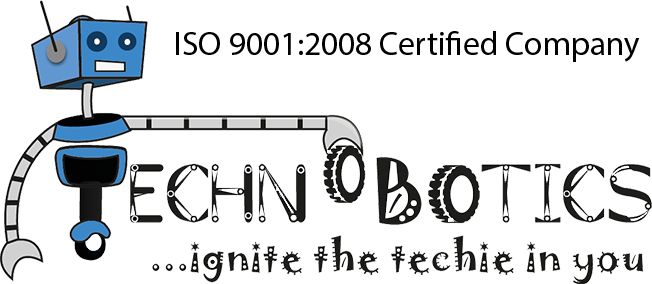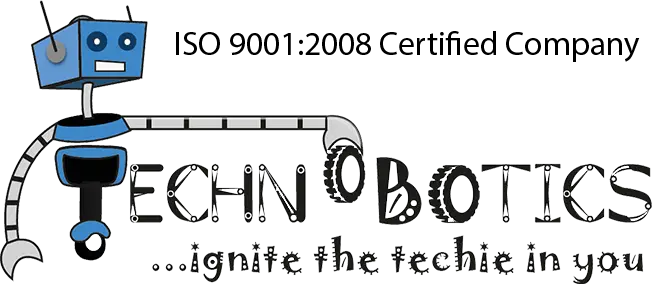Globalization is more fast-paced than ever, and technological development is reshaping industries and changing lifestyles and how people work. With STEM professionals in high demand, the curricula of educational institutions are being revamped to equip students with the necessary skills. One of the most exciting ways to achieve this is by incorporating robotics training in schools.
Robotics lessons for elementary students offer a fun and engaging way to introduce core STEM concepts. These lessons can spark a passion for science, technology, engineering, and math, while nurturing critical thinking, problem-solving, and collaboration skills. This practical approach allows students to see the real-world applications of what they’re learning, making them more invested in their education and better prepared for the future job market.
Why To Learn Robotics Training in Schools?
Learning about robotics positively benefits students, instructors, and our whole community. That’s why students who engage in STEM learning through robotics activities can acquire hands-on experience in STEM concepts and have the necessary skills like collaboration, communication, and determination. Furthermore, projects linked with robotics training in schools cause students to develop this creative thinking and approach challenges without expectations but with a growth mindset so that students come to love the learning process and exploring the world.
How To Integrate Robotics?
On the one hand, for educators, robotics training in schools serves as a highly flexible tool for learning a wide range of subjects. Including lessons on robotics in the curriculum can help students understand complex concepts not otherwise accessible in a classroom. Students can also see practical applications coming from their studies. Nowadays, robotics in teaching not only concerns theory but also practice as well, equipping students with a better comprehension of current technology and their experience in the workplace in the future.
Implementing robotics training in schools entails a thorough design and selection of variables that include but are not constrained to those mentioned. Here are some key components to consider.
- Curricular Alignment
Robotics lessons for elementary students should be organized in agreement with the standards of the curricula. In this way, we ensure that learning objectives are achieved across various fields of study. The experiment’s goals are to find unique ideas that we can use robotics to create projects that integrate with the curriculum in learning programs.
- Hands-on Learning
Make a point of putting forward an approach to mainly learning touch and do, namely, activities where the learners directly work with robotics kits, sensors, and programming languages. Offer chances to go deeper into the investigative or illuminating realm for students to learn from their efforts.
- Interdisciplinary Approach
It is essential to approach robotics lessons for elementary students through an interdisciplinary approach by incorporating ideas from different subject areas. For example, students can analyze geometry and spatial reasoning through robot design and motor control and explore the operations of robotic systems with the help of the principles of physics and mechanics.
- Project-based Learning
Promote project-based projects as the learning model, where students will work in teams to design robots to address various real-world problems. Such projects can vary extensively and include games as straightforward as courses with obstacles to more complex assignments such as the design of autonomous vehicles or performing scientific experiments.
Take measures to ensure that all students can reach the best robotics-inclusive robotics courses, regardless of their background or physical abilities. Personalize the supplies and support resources by different learning requirements for equalizing the skew regarding this sphere.
- Teacher Professional Development
Provide funds for teacher training programs to empower educators with the required advice and know-how to execute the best robotics courses. This will offer support and resources that facilitate teachers to use robotics activities with assurance and pass on to their students the same spirit of excitement that becomes crucial.
Practical Implementation Strategies
Introducing the best robotics course curriculum is a task that needs to be done carefully and with a straightforward approach. Here are some practical tips for educators: Here are some helpful tips for educators:
- Assemble resources that will help you begin a robotics initiative; then, as the process unfolds, you can scale these activities to meet your teachers and the available resources of the school.
- Integrate experience-oriented robotics technologies that are available off-the-shelf, are affordable, are(are) practical, and are adaptable to() different age ranges and proficiency levels.
- Create an Ecosystem of Robotics within extracurricular societies like robotics clubs, maker spaces, and STEM enrichment platforms.
- Sustain an establishment replete with innovations and creativity by inspiring students to go for their ideas and projects within robotics.
- Displaying student projects and production, robotics competitions, fairs, and community activities, in which success will be celebrated, is one of the means that can be employed to promote interest in education.
Final Words
Integrating robotics into the school curriculum holds immense potential for empowering tomorrow’s innovators and preparing them for future challenges. By providing students with hands-on learning experiences in robotics, educators can cultivate a passion for STEM fields within students. Through careful planning, interdisciplinary collaboration, and a commitment to inclusive practices, Technobotics harnesses the power of robotics education to inspire the next generation of innovators and problem solvers.


